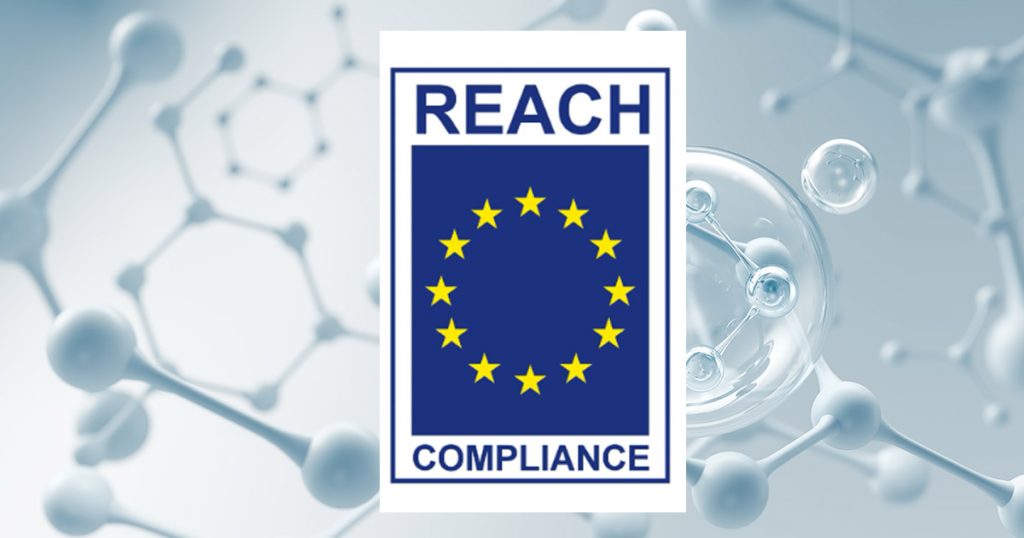Your cart is empty
Understanding Reach Compliant Materials in Manufacturing
In the world of manufacturing, ensuring the safety and sustainability of materials is one of the most important aspects of maintaining a successful, trusted business. The responsibility to ensure the health and safety of the consumer is enormous, but REACH compliance helps manufacturers meet the highest standards with a comprehensive framework.
REACH-compliant materials and protocols contribute to the overall well-being of consumers and the environment while promoting a culture of responsible chemical management. Below, we’ll cover the basics of how REACH became an industry regulation and what it means for businesses and consumers.

What is REACH?
REACH stands for the Registration, Evaluation, Authorization, and Restriction of Chemicals. This regulatory framework was implemented by the European Union (EU) in 2006. Its primary objective is to safeguard human health and the environment from potential risks linked with chemical substances and their associated toxicity.
By ensuring compliance with this regulation, manufacturers commit to safety and sustainability. They also submit to registering the substances used in their products and processes and sharing relevant data with industry regulators. When materials are REACH-compliant, they’ve met stringent requirements, providing consumers with peace of mind that they are safe for use and pose minimal risk to the environment.
Key Components of REACH Compliance
The successful implementation of REACH compliance involves navigating several crucial components that collectively contribute to the safe use of chemicals in manufacturing processes. Manufacturers must continuously monitor updates, adapt their practices accordingly, and collaborate with regulatory bodies to ensure a smooth and compliant manufacturing process. Navigating through this process requires diligence and a proactive approach to stay aligned with REACH regulations. The process is as follows:
Registration
REACH mandates that manufacturers and importers register substances they produce or bring into the European Union in quantities exceeding one ton per year. The registration process involves providing detailed information about the substance, including its properties, uses, and potential risks.
Manufacturers, importers, and sometimes even downstream users might be required to register substances. This obligation applies not only to chemicals but also to certain products containing them, emphasizing the broad scope of REACH.
Evaluation
Following registration, the European Chemicals Agency (ECHA) evaluates the information. The evaluation aims to ensure the completeness and reliability of the data and may lead to further inquiries or requests for additional details.
ECHA plays a central role in coordinating the evaluation process. Its responsibilities include assessing the information provided, identifying substances of concern, and proposing necessary regulatory actions.
Authorization
Authorization comes into play for substances deemed of high concern, such as those with potential carcinogenic, mutagenic, or toxic properties. Manufacturers must apply for authorization to use these substances. In applying for authorization, manufacturers must demonstrate that the benefits of using the substance outweigh the risks and that viable alternatives are unavailable.
REACH includes a list of substances subject to authorization or restriction that is publicly available. Understanding the implications of using restricted substances is crucial, as it may affect manufacturing processes and necessitate finding alternative, safer options.
Restriction
REACH empowers regulatory authorities to restrict the manufacturing, placing on the market, or use of substances posing unacceptable risks to human health or the environment. This ensures that only safe chemicals are used in various applications.
REACH-Compliant Materials in Manufacturing
The utility of REACH-compliant materials spans across various industries in the manufacturing sector, from automotive and aerospace to cosmetics and textiles. Materials that must meet REACH compliance regulations include polymer resins, metal alloys and coatings, plastics, adhesives, and more.
The importance of REACH-compliant materials cannot be overstated in the manufacturing industry. Their use signifies a commitment to safety, sustainability, and efficiency, thereby enhancing industry credibility.
Shamrock Technologies strives to exemplify this responsibility by prioritizing REACH compliance and seeking safe and effective alternatives that will make us a trusted global partner and leader in the manufacturing space.